Stay in the know on all smart updates of your favorite topics.
Extra private SUV cars or shared mobility in your city?

In this short video (5min) Geert Kloppenburg shares his vision on shared mobility in the city.
Please respond by giving your feedback and share in your network!
https://bit.ly/Sharedmobilitynl
For feedback:
Email: geert@geertkloppenburg.nl
Breaking news for Amsterdam: The Global Startup Ecosystem Report 2021 is available

In the recent past, the value of startups in Amsterdam Delta (Amsterdam metropolitan region) has taken a giant leap. In 2015, Amsterdam startups were valued at $11.1 billion. Today, Europe's number 3 ecosystem is worth $83.3 billion. The extraordinary success stories of Adyen and Takeaway have been a major contributor to this success, but its base is much broader. On the annually published Global Startup Ecosystem ranking Amsterdam Delta rose from the 19th place in 2015 to 12th place in 2020. Everyone was curious about the 2021 ranking. Well, as the table shows, Amsterdam Delta has been overtaken by Paris and Tokyo, but only lost one place due to a significant drop in Stockholm.
The value of rankings is easily overestimated. However, the value of startups should not be underestimated. More than 30% of the 4000 startups in the Netherlands are located in the Amsterdam metropolitan region. Together, the Dutch startups have created more than 100,000 jobs and are responsible for 60% of the annual job growth.
Globally, 2020 and 2021 were amazing years for startups as the pandemic fueled technology. According to the Global Startup Ecosystem Report 2021, Internet capacity increased by 35% and global broadband traffic by 51%. Consumers bought 30% more food online. Global venture capital funding nearly doubled to $288 billion in the first half of 2021, compared to the first half of 2020. Startups have benefited from the explosive technology market, supported by significant government support. Following China and the US, the European Union has been generous to startups, and the same goes for its member states. The Dutch government offers tax credits to innovative companies and environmentally friendly investments. The city of Amsterdam promotes startups that support inclusive growth and diversity, for example by subsidizing female entrepreneurs.
The Amsterdam Delta startup ecosystem can be characterized as vibrant. Still other ecosystems in the world are growing faster, including those in some European cities. In the global top ten emerging ecosystems, we find Copenhagen in second place and Barcelona, Madrid, and Zurich in places 5, 8 and 9.
To detect possible vulnerabilities in the Amsterdam Delta startup ecosystem, analyzing of success factors of the 30 highest-ranked ecosystems in the report is informative. In terms of performance, Amsterdam's composite score is in a middle position (6 out of 10 points). In terms of funding, the position is good (8). In terms of market reach, the overall score is satisfactory (7): The Amsterdam Delta startups are primarily focused on global markets and score low on the local market. Like most European ecosystems, Amsterdam Delta scores excellent (9) in connectedness, which is related to its strength on the global market. In terms of talent, the overall score is satisfactory (7), but the components differ considerably. The quality of technology students and graduates is good, but their number is insufficient, resulting in high salary costs. The scalability of the Amsterdam startup ecosystem is also insufficient, due to a lack of experience, which keeps many startups small. The overall knowledge success is assessed as poor (1) because the number of life science patents is disappointing.
When assessing the success factors, it should be considered that the population of Amsterdam Delta is about 10% of the population of London, and in this perspective the need to improve the global 13th place is not urgent. On the contrary, understanding why the Amsterdam Delta is performing so well is more relevant than looking for opportunities to improve it.
The explanation of Amsterdam's success has its roots in the fundamental strength of the Netherlands as a whole, which has at least ten other vibrant startup ecosystems. Against this background, one might be curious about the Global Startup Ecosystem ranking of the Randstad, including Eindhoven as a whole. According to the report, the strength of the Netherlands is its well-educated population, international orientation and English proficiency, excellent infrastructure, an 'extremely high quality of life' and business-friendly laws. Amsterdam is also the headquarters of many international companies, a large pool of potential startup founders.
In a next post, I will focus on Amsterdam's policy towards startups and evaluate whether a higher ranking is within reach or whether more qualitative objectives are preferable, taken into account the considerations in a former post on the Amsterdam Smart City website.
I will regularly share ‘snapshots’ of the challenge of bringing socially and ecologically sustainable cities closer using technology if useful. These posts represent findings, updates, and additions to my e-book Humane cities. Always humane. Smart if helpful. The English version of this book can be downloaded for free below.
Building back better with a systemic approach

As the world grapples with vaccinations, variants, and how to return to "normal", it’s a good time to reflect on whether or not we are fully equipped to prevent future shocks.
Building true resilience means addressing the systemic issues that make our world increasingly fragile, by understanding the deeper structures and mental models at the root of a problem to create lasting solutions.
Check out our article done by Metabolic last year about building back better.
Redesign of public space in your own area possible?

Would this simple redesign of the public space in the suburbs of Utrecht, be an option in your area? In a special serie of short videos, Geert Kloppenburg visit suburbs of the large cities in the Randstad in Holland. Here is part 1 Utrecht. Curious what you think of the idea and feel free to share!
Watch the video here:
https://youtu.be/l_l5PRhzfVU
Onderzoek: Deelmobiliteit in Almere! / Enquête

Almere is een stad waarin de mogelijkheden om jezelf te verplaatsen eindeloos zijn. Niet alle vervoersmiddelen zijn even praktisch, milieuvriendelijk of gezond. Veel van onze auto’s staan het grootste gedeelte van de tijd stil op de parkeerplaats. Ze nemen kostbare ruimte in en daarbij zorgt het gebruik van de auto voor een minder gezonde lucht.
Wat is deelmobiliteit?
Een oplossing hiervoor kan zijn om voertuigen te delen. Dit noemen we ook wel deelmobiliteit. Niet iedereen een eigen auto, maar één auto die wordt gebruikt door meerdere personen. Naast een auto kun je ook (e-)fietsen of scooters delen. Deze zijn belangrijk om bijvoorbeeld het laatste stukje van het treinstation of bushalte gemakkelijk naar je werk te komen.
De gemeente Almere is benieuwd hoe jij hierover denkt. Jouw mening kunnen we gebruiken bij het opzetten van deelmobiliteit in onze stad. We gaan betrouwbaar om met uw gegevens en de reacties worden anoniem verwerkt. Vul voor ons de enquête in!
Transforming the food system through impact-driven ventures

A sustainable food system is critical to our social and planetary well-being.
New initiatives have a big role to play, and Metabolic's newest venture, Fresh Ventures Studio, is looking to help build promising companies to solve systemic challenges.
Fresh Ventures is a venture-building program and startup studio based in The Netherlands. They co-found companies with experienced professionals and entrepreneurs to address systemic challenges in the food system.
If you're an entrepreneur looking into building a venture that responds to the world's sustainability challenges, sign up with Fresh: https://www.freshventures.eu/
More about its establishment and purpose from this article.
Carefree through Amsterdam on a shared bike

Amsterdam is investing heavily in shared transport. Shared cars, scooters and bicycles make the city more accessible. That last option is healthy, clean and popular. For those who don’t have a bike, or looking for a second bike, we have a shared bike. The city of Amsterdam will receive 1,400 shared bicycles, including 100 shared electric cargo bikes. Some are allready on the streets; the rest will follow from August 15.
Where can you find shared bikes?
At the Zuidas, along the ‘Westlijn’ of the metro, in Oost and Zuidoost. Electric shared cargo bikes can be found in Oost and Zuid. There is a maximum number of shared bicycles per area. It is a 2 year experiment. Then we'll see if we continue.
• FlickBike: 400 shared bicycles along metro stations on the ‘Westlijn’ (from Henk Sneevlietweg to Isolatorweg) and the bus to Westpoort, from 15 June
• Cargoroo: 100 electric shared cargo bicycles in Oost and Rivierenbuurt (Zuid), from 15 June
• Donkey Republic: 300 shared bicycles in Oost, from 15 August
• Soon to be announced: 400 shared bicycles Zuidoost and 200 shared bicycles Zuidas from 15 August
Where do I park the shared bike?
A shared bicycle is a good means of transport for commuters and visitors. The bicycles are usually located near a public transport junction. They have their own parking spaces and must be returned to 1 of the parking spaces of that provider. Only in those places can you stop the rent. The shared cargo bikes have their own parking space, clearly marked on the ground. You can of course park the bike somewhere else in between, but then you will continue to pay. That way the bikes won't roam, is the idea.
Note from ASC: Have a question? Let’s hear it in the comments!
Whitepaper Shared Mobility Employers (Dutch)

Due to the many working from home, employers are moving away from fixed travel allowances on a large scale and business lease fleets are also shrinking for the first time in years. In order to meet the travel needs of employees in a good way, more employers are switching to shared mobility as a financial solution.
By focusing on shared mobility, you save valuable parking space, offer your employees a flexible mobility solution and possibly save on your CO2 emissions. Research by the Kennisinstituut Mobiliteit (KiM) shows that a car sharer annually emits 175 to 265 kg less CO2 than before he started car sharing. In addition, shared mobility contributes to better accessibility of the region. Shared mobility is therefore booming: in 2020 the number of shared car users rose by no less than 42% to 730,000.
Municipality of Amsterdam is investing heavily in shared mobility
The City of Amsterdam is working hard to make shared mobility a fully-fledged alternative for everyone who wants to move around in the city. Shared mobility is one of the solutions to keep mobility, quality of life, space on the street and accessibility in the city in balance. There are experiments with shared bicycles and scooters on the street and providers of shared cars are encouraged to offer their services in Amsterdam.
Breikers supports employers free of charge in the Amsterdam Metropolitan Area
The mobility needs of every company and every employee are different. That is why Breikers provides free and independent tailor-made advice. Our interactive mobility scan is even free to use for Breikers participants! Do you need help developing your plans for the realization? In many cases you can re-enable Breikers to come up with the right solution.
To help you on your way, a white paper (in Dutch) has been prepared with the most up-to-date ins-and-outs in the field of Shared Mobility.
Tools for circular construction

The impact of circular principles on the construction sector will be large and beneficial because buildings are responsible for more than 50% of the total use of materials on earth, including valuable specimen such as steel, copper, aluminium and zinc.
The picture above – the interior of the Circle pavilion of the ABN-AMRO bank in Amsterdam is an example of a new building that uses as many existing components as possible and new components of the building are designed to be reused. Think of:
• 1200 m2 of wooden floors
• Partition walls of a demolished building
• 16.000 garments of employees for isolation purposes
By circular construction we mean designing, building and demolishing a building in such a way that, in addition to the high-quality reuse of materials, justice is done to sustainability ambitions in the field of energy, water, and biodiversity and ecosystems.
New materials are often more expensive than new ones
In case of demolishment, nowadays many components are already reused, but at a very low level, for instance concrete and stones as the foundation of new roads. Apart from the limited necessity to construct many new roads, this type of recycling destroys the intrinsic quality of materials and does not diminish the use of new materials. The biggest problem is that recycled materials are often more expensive than new ones.
Evidently, progress can be made by planning, designing, developing, and building circular buildings. A number of options are mentioned below.
Dedicated urban planning
Challenges for planning are the use of inner-city vacant land and issuing mandatory requirements regarding the construction of new buildings, for instance the use of less cement, glass and steel, the mandatory application of a certain percentage of reused materials, and becoming energy positive or at least energy-neutral. Switching to sustainable timber is an option for 90% of homes and 70% of offices being built.
Mandatory reuse of existing components
Reuse of existing materials means that glass is reused as glass and concrete pillars as pillars. The same applies to doors, frames, carpets, wall-cladding materials and so on. To start with, after demolishment all materials must be selected, cleaned, registered, and stored in new-to-develop warehouses. A materials passport, which contains an overview of all materials and components that are used to construct of a house or building, is a useful tool as well. The obligation to reuse a large percentage of existing components has far-reaching consequences for the design and construction of new houses.
Industrial production and 3D printing
Construction of components in factories, deploying industrial processes, will reduce costs by 30 percent and the delivery time by at least 50 percent. In 2014, the Chinese company WinSun printed and assembled ten houses, each 195 square meters, in 24 hours, for an amount of €5,000 per house[1]. The company used 30 - 60 percent less material than in traditional construction. The “ink” for their 3D printers is a mixture of dry cement and construction waste. WinSun plans to open 100 recycling plants in China to convert waste into cost-efficient ink. This video below demonstrates the printing activities of WinSun
Sharing space
The size of apartments will decrease, partly due to costs, but also because of the presence of shared guest rooms, lounge areas and terraces for working and socializing, spaces for washing and drying laundry. The need for office space will decrease rapidly due to sharing space and working home. Already now, IBM has only one desk available for 12 employees. Given the presence of 300,000 employees, this has led worldwide to savings on real estate of around € 1 billion in the past 10 years.
Modularity and durability
A key barrier for better use of floor space is the lack of flexibility in the design of buildings and room configurations. A modular design, which provides for easy replacement of partitions and placement of complete pre-fab units (kitchens and bathrooms, walls, and roofs as well) facilitates adjustments in case of new construction or as the use of a building changes. DIRTT builds interior components that are modular and standardized and offer maximum interchangeability in both existing and new buildings[2]. This video gives an impression of the production and application of these flexible and inexpensive solutions.
Forget new construction at all
Anyway, a first step is more efficient use of existing buildings and houses.
As families become smaller and offices need less space, existing space becomes underused. Many thousands of one family houses can be transformed in apartments. Well-thought adjustments to the lay-out of existing houses and buildings can improve their efficiency without reducing their functionality and amenity. Look here for inspiring examples.
I will regularly share with you ‘snapshots’ of the challenge to bring social and ecological sustainable cities closer using technology if helpful. These posts represent findings, updates, and supplements of my e-book Humane cities. Always humane. Smart if helpful. The English version of this book can be downloaded for free below.
Note from ASC: What are your thoughts on this? Let Herman know bellow.
The building for the Temporary Courthouse in Amsterdam will be relocated to Enschede!
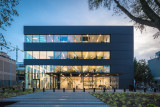
Over the coming months, the building of the Temporary Courthouse Amsterdam will be dismantled and completely reassembled on 'Kennispark Twente' (the area of Business & Science Park/Campus UT) in Enschede. There, it will have a new function as an office and research facility.
The temporary accommodation provided the Amsterdam judiciary continuity during the construction of the new permanent court. Now that this new home has been completed, the building will move as planned. At the time, the Central Government Real Estate Agency (RVB) tendered the assignment as a Design, Build, Maintain & Remove contract, which was realized by dpcp, a cooperation between cepezedprojects and Du Prie Bouw & Ontwikkeling. cepezed and cepezedinterior designed the building and Du Prie took care of the execution.
National Sustainability Award Steel after completion
Importantly because of its high degree of circularity, it won both the Amsterdam Architecture Prize (Golden AAP) and the National Sustainability Award Steel after completion. Also, in the report 'Circular Buildings – a measurement method for detachability' it scores the highest of all tested projects. The demountable construction and floors, which cepezed designed in close collaboration with IMd Consulting Engineers, play an important role in this.
Dismantling and reassembly with a 3D model
Yesterday saw the handover of the key from the RVB to dpcp, which heralds the new phase of the building. For the relocation, dpcp called in the expertise and experience of Lagemaat from Heerde, a company with a solid background in the dismantling and reassembly of buildings. Through a unique coding based on the 3D model and a 3D scan, the precise position of each part is known. Smaller elements are transported in containers and larger ones, such as the walkway, are loaded directly onto trucks. Lagemaat processes materials that are not reused in other projects. A minimal amount will be recycled in a high-quality manner. The dismantling period starts today already. The building is expected to be taken into use by the Overijssel Restructuring Company in early 2022.
Note from ASC: Would you like to know more? Let Menno know in the comments.
Stem op De Buitenkans: van grofvuil tot spullen-ruil!
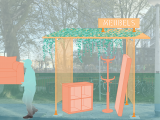
De Buitenkans ordent grofvuilstapels, en beschermt spullen tegen de regen. Bewoners kunnen er hun spullen sorteren, tentoonstellen en onderling uitwisselen, voordat deze worden afgevoerd.
Ontwerpprobleem
Op de stoepen van Amsterdam Noord ligt altijd grofvuil. Dit wordt vaak gezien als gedragsprobleem, maar eigenlijk is het meer een ontwerpprobleem. Lokaal eigenaarschap kan namelijk wel: overal staan ruil-boekenkasten, vaak beheerd door bewoners. Hier en daar staat zelfs een rek met gratis mee te nemen kleren, of wordt een bushokje gebruikt om spullen uit te stallen.
Met De Buitenkans passen we dit idee toe op grofvuil ophaalpunten. Bewoners kunnen er spullen sorteren en beschermd uitstallen. De spullen behouden zo langer hun waarde, en worden makkelijker weer meegenomen door buren.
Net als de normale grofvuillocatie wordt De Buitenkans iedere maand geleegd. In de tussentijd worden er spullen en materialen geruild. Bekijk deze korte video, waarin we het concept verder toelichten.
Boost je buurt!
De Buitenkans staat nu in de finale van ‘Boost je Buurt’. Met jou stem kunnen we max €7.500 winnen. Daarmee willen we een prototype bouwen, zodat we kunnen testen of het werkt.
Stem op De Buitenkans - en bouw mee aan een circulaire buurteconomie!
Je kunt t/m 16 juni, 12:00 stemmen.
Note van ASC: Nog input of tips voor Tessa? Laat ze achter in de comments 💬
Metropolitan Mobility Podcast with Karen Vancluysen (Polis Network)
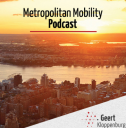
How can local governments deal with (technological) innovations? Listen to the #podcast with Karen Vancluysen of POLIS Network: https://bit.ly/mobilitypod
New podcast out !
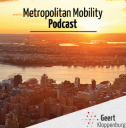
De Gouden Piramide ging in 2016 naar een bijzondere plek voor jonge mensen: Xenia Huis met een Hart Hospice en Logeerhuis Leiden. Luister naar het indrukwekkende verhaal van oprichtster Jacqueline Bouts: https://bit.ly/mobilitypod
Daar krijg je ENERGIE van! (podcast) 🔌♻️
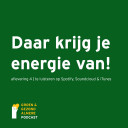
Het is één van de punten op de duurzaamheidsagenda van de Gemeente Almere: energie. En maar goed ook, want we gebruiken er heel wat van met elkaar. Hoe komen we er aan en hoe verzamelen we onze energie in de toekomst? Over die vraagstukken hebben verschillende Almeerders zich al gebogen.
Goed nieuws: deze mensen hebben antwoorden gevonden! In deze aflevering gaat presentatrice Nadia Zerouali weer in gesprek met jonge Almeerders die hun mening en dromen met ons delen, spreken we innovatieve ondernemer Luuk Wiehink over zijn app Earn-E én uiteraard weer een expert die gespecialiseerd is in dit onderwerp: Jeike Wallinga, lector aan hogeschool Windesheim. En we kunnen al met je delen dat deze verhalen je een hoop energie meegeven.
Te luisteren via Spotify, Soundcloud of iTunes
Metropolitan Mobility Podcast: Het ondergeschoven kindje van de mobiliteit: Lopen!

Meer gaan wandelen door #corona? Ankie van Dijk (Directeur Wandelnet) en stedenbouwkundige Annemieke Molster over het ondergeschoven kindje van de mobiliteit: Lopen! #podcast: https://bit.ly/mobilitypod
Ben jij een fanatieke wandelaar?
Laat ons weten wat je van de podcast vindt!
Intentieovereenkomst slimme mobiliteit ondertekend
Op 10 maart hebben de gemeente Almere, de provincie Flevoland de Metropoolregio Amsterdam (MRA) en het ministerie van Infrastructuur en Waterstaat een intentieovereenkomst ondertekend op het gebied van slimme en duurzame mobiliteit.
De komende jaren worden meer dan 100.000 woningen gebouwd in de provincie Flevoland. Daardoor zal er een groeiende mobiliteitsbehoefte ontstaan èn een toenemende druk op de toch al schaarse ruimte en de kwaliteit van de leefomgeving. Om steden leefbaar, duurzaam en bereikbaar te houden, voldoet de traditionele kijk op mobiliteit niet meer. Een meer integrale benadering, waarbij het totaal aan opgaven in een gebied wordt bekeken, is nodig.
Daarom sluiten Rijk en regio vandaag een intentieovereenkomst, waarin zij afspreken om gezamenlijk slimmere en duurzamere oplossingen voor mobiliteit grootschalig te gaan organiseren.De partijen gaan samen uitwerken hoe een passend en duurzaam aanbod aan vervoersmogelijkheden het beste kan worden vormgegeven.
En hoe mensen kunnen worden gestimuleerd om slimmere mobiliteitskeuzes te maken: meer gebruik van het deelaanbod, optimaliseren van het ruimtegebruik en andere duurzame alternatieven. Omdat een aanzienlijk deel van de woningbouwopgave in Almere zal worden gerealiseerd, is Almere de logische initiatiefnemer voor deze intentieovereenkomst.
De komst van de Floriade naar Almere in 2022 biedt een ideale gelegenheid om een combinatie van verschillende slimme en duurzame mobiliteitsoplossingen aan een groot publiek aan te bieden.
Voor de invulling van de in overeenkomst uitgesproken intenties is door de gemeente Almere een kwartiermaker aangesteld, die zal starten met het opstellen van een programmaplan waarin de intenties worden uitgewerkt.
Lees hier het volledige persbericht.
Siemens Mobility bouwt landelijk MaaS-platform Rivier NS, RET en HTM zetten in op digitale ontsluiting van heel Nederland
NS, RET en HTM laten
hun landelijke MaaS-platform bouwen door Siemens Mobility. Het platform maakt het mogelijk om een reis met verschillende vervoermiddelen in één keer online te plannen, boeken en betalen. RET-directeur Maurice Unck namens Rivier, de joint venture van de drie partijen: “Na de pandemie verandert ons reisgedrag.
We reizen, werken en leren flexibeler: in tijd, plaats en keuze van het
vervoermiddel. Daarom investeren we juist nu in de beste reismogelijkheden voor de consument. We willen de drempel verlagen om een reis met meerdere
vervoermiddelen eenvoudig digitaal te plannen, boeken en betalen. Daarom roepen
we alle Nederlandse mobiliteitsaanbieders op om zich aan te sluiten.”
Naar verwachting zien
in het najaar de eerste apps van MaaS-providers het licht waarmee consumenten
hun multimodale reis in heel Nederland kunnen plannen.
Stel: je wil
graag bij een vriend, een klant of iemand anders op bezoek en gemakkelijk weten
hoe je daar het snelst bent en hoeveel dat kost. Hoe krijg je dat voor elkaar?
Je kunt kijken of er files zijn, een deelauto boeken, uitzoeken of het OV goed
werkt, nadenken over de fiets als alternatief en meer. Maar een reis
samenstellen waarbij deze verschillende vervoermiddelen van
mobiliteitsaanbieders optimaal worden ingezet, moet je nu nog helemaal zelf
doen. Dat is best een complexe puzzel die veel mensen liever overslaan. Terwijl
juist de combinatie van vervoermiddelen je als reiziger veel tijdwinst en
bewegingsvrijheid oplevert. Daarnaast helpt zo’n combinatie onze infrastructuur
zo goed mogelijk te benutten.
Reisopties in één
keer zichtbaar, één keer afrekenen
Met het nieuwe platform
is het straks voor consumenten veel makkelijker om gebruik te maken van
beschikbare vervoermiddelen. Het platform kan verbonden worden met al bestaande
apps van MaaS-providers zoals de NS, RET, HTM. Maar het platform kan ook andere
bestaande apps en nieuwe apps bedienen. De snelheidswinst zit ‘m erin dat alle
afzonderlijke vervoersmogelijkheden op de route in één keer inzichtelijk
worden. Maak je bijvoorbeeld graag gebruik van een deelscooter of reis je
liever per trein of metro? De app houdt rekening met ieders persoonlijke
voorkeuren en past het advies daarop aan. Bovendien is er geen gedoe met
verschillende vervoersbewijzen en de betaling ervan: ook dat regel je heel
makkelijk vanuit je favoriete app of website.
Toegankelijk voor alle mobiliteitsaanbieders:
De initiatiefnemers
willen de mobiliteitsdiensten van zoveel mogelijk aanbieders in Nederland
samenbrengen. Of het nu gaat om taxibedrijven of deelfietsen, e-scooters of
zelfs particuliere automobilisten. Hoe meer partijen hun diensten aanbieden,
hoe beter het écht mogelijk wordt om heel Nederland digitaal te ontsluiten.
Aanbieders profiteren van het gemak van eenmalig laagdrempelig aansluiten en
hebben direct een landelijk bereik te met een platform dat doorontwikkeld is om
de klantbeleving te optimaliseren. Daarom roepen de initiatiefnemers alle
aanbieders op om zich aan te sluiten.
Metropolitan Mobility Podcast met Maurits van Hövell: van walkietalkies naar het Operationeel Mobiliteitscentrum

“Voorheen werd er gewoon rondgebeld: ‘Wij zitten in de instroom van de ArenA. We hebben nu 20.000 man binnen. Hoe gaat het bij jullie op straat?’” In de achtste aflevering van de serie A Radical Redesign for Amsterdam, spreken Carin ten Hage en Geert Kloppenburg met Maurits van Hövell (Johan Cruijff ArenA). Hoe houdt je een wijk met de drie grootste evenementenlocaties van het land, bereikbaar en veilig? Ze spreken elkaar in het Operationeel Mobiliteitscentrum over de rol van de stad Amsterdam, data delen en het houden van regie. A Radical Redesign for Amsterdam wordt gemaakt in opdracht van de Gemeente Amsterdam.
Luister de podcast hier: http://bit.ly/mvhovell
New mechanisms needed to tackle Dutch early-stage circular economy funding gap
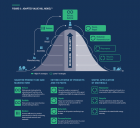
New research reveals a large funding gap for circular economy initiatives in the Netherlands, particularly early-stage circular ventures.
Interviews with city municipalities, entrepreneurs, financial institutions and working groups indicate that the funding gap is especially acute for higher value-yielding circular business models and activities such as reducing, reusing, repairing, and refurbishing.
Entrepreneurs in these areas of the circular economy struggle to find funding even though these activity types have the largest potential to increase the economy’s resource efficiency, and provide high-quality employment opportunities in cities. Research indicates that achieving a circular economy in the Netherlands could create approximately 200,000 new jobs by 2030.
The paper Financing Circular Economy Innovation in the Netherlands authored by Metabolic Institute with support from the Goldschmeding Foundation, highlights a lack of systemic collaboration as a critical barrier to circular innovation, and proposes new approaches to circular economy financing in the Netherlands.
“Blended finance instruments in particular can help to address circular economy related risks, and make the circular economy more investable for the private sector,”’ said Seadna Quigley, Lead Circular Finance at Metabolic.
Public-private collaboration in the form of blended finance works to de-risk circular asset classes by using public or philanthropic capital to stimulate the market, provide proof-of-concept, and draw private-sector capital into the circular economy.
“But lack of funding is not the only problem facing Dutch circular economy entrepreneurs,” said Liz Corbin, Director of Metabolic Institute. “They also lack access to experts and the necessary knowledge to navigate the funding landscape.”
To address current bottlenecks, the paper proposes the creation of a mission-driven investment fund and ‘innovation ecosystem’ that convenes impact investors, philanthropies, and city governments.
Numerous Dutch cities have impressive track records when it comes to circular economy plans, but access to finance is one of their most significant barriers to delivering on these plans.
In addition to systemic impact investing and fundraising, the fund will aim to create an enabling ecosystem that brings together capital, knowledge, and networks of expertise to provide entrepreneurs in the circular economy with the financial and non-financial resources they need to scale up their businesses.
“We believe that circular innovation and job opportunities are created by financing circular entrepreneurs. But financing alone is not enough; we have to build a support system for entrepreneurs on an urban level,” said Birgitta Kramer, Circular Economy Programme Manager at the Goldschmeding Foundation. “The 'Circular Innovation Ecosystem' is a first step towards guiding financiers, entrepreneurs and local governments to collaborate in this approach.”
A call to action
An impact- and mission- driven finance ecosystem has potential to accelerate the transition to a circular economy that equitably distributes prosperity to all and safeguards the natural world.
We invite the following stakeholders to collaborate with us to advance the development of such an ecosystem:
- Financier or investors with creative ideas and strategies for stimulating early-stage circular innovation in the Netherlands
- Asset owner or fund managers with the curiosity to develop and test impact-driven frameworks for portfolio management and evaluation
- Accelerators or incubators committed to supporting Dutch circular innovators and entrepreneurs
- Circular innovators or entrepreneurs interested in matching higher value circular solutions to the contexts and challenges of Dutch municipalities
- Municipalities looking for novel ways to deploy finance in service of circularity strategy
To learn more, please send an email to the CIE team at: circularfinance@metabolic.nl
Stay up to date
Get notified about new updates, opportunities or events that match your interests.


